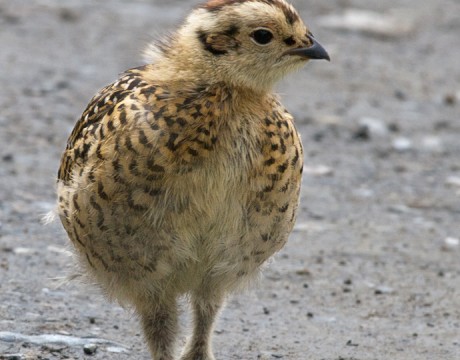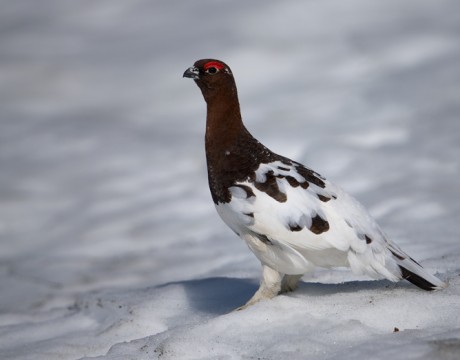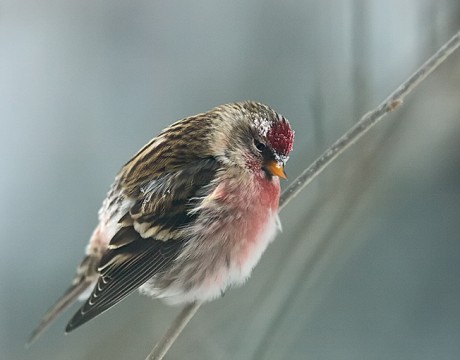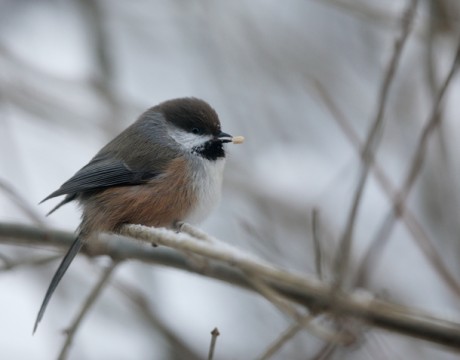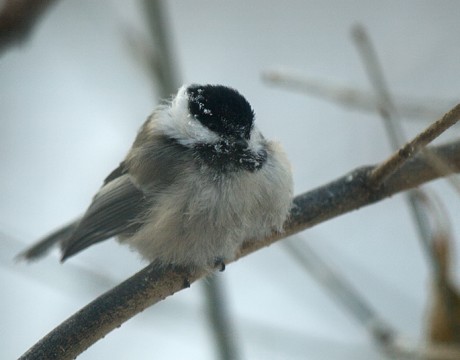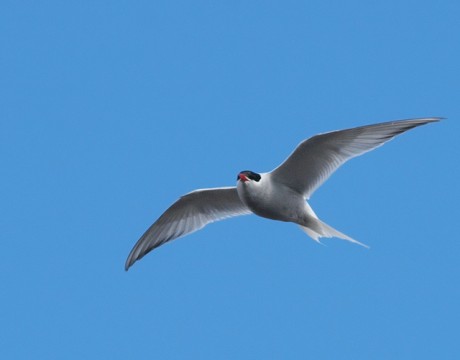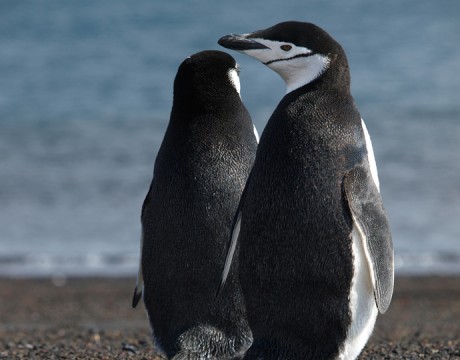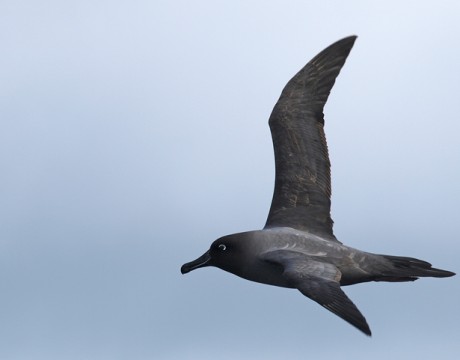Bird of the Week – Spruce Grouse
Sometimes overlooked among its more common cousins, the Spruce Grouse is arguably the most handsome of Alaska’s boreal chickens. This handsome fellow was strutting his stuff along Quartz Lake Road. Perhaps more than his cousins, the Spruce Grouse seems to favor crepuscular light, the times around sunrise and sunset. The low light makes photographing this species a bit of a challenge. Because these birds dine mostly on spruce needles, their meat has a turpentine-like flavor. As a result, there’s not much hunting pressure. Yet there’s not a lot of Spruce Grouse around. For more bird photos, visit Frozen Feather Images.
Bird of the Week – Just Kidding Around
Sometimes we forget that birds have their own agendas, which is usually the task of making more birds. This hatchling Willow Ptarmigan was just coming into his adult plumage in late June. The little guys are almost impossible to see on the tundra, but on the gravel bars you can sometimes spot the kids, with mom and pop doing their best to make you pay attention to the adults instead. For more bird photos, visit Frozen Feather Images.
Bird of the Week – Willow Ptarmigan
We’re still months from Spring, but it probably doesn’t violate Mudflats Rules to think about Spring. This male Willow Ptarmigan is in transition from winter to summer plumage. It’s an alpine bird, on the east end of the Denali Highway, where the spring comes a little later. The male trails the female’s molt by a few weeks, serving as a more obvious target for predators than the female, huddled on the eggs. For more bird photos, please visit Frozen Feather Images.
Bird of the Week – Common Redpoll
The very Common Redpoll, WC gets counts in the hundreds at his feeders. Still, the males, with the reddish wash on their chest, bring a bit of color to an Interior Alaska winter. The winter of 2013-2014 has already been a tough one for Redpolls. Their primary winter food is birch mast, the seeds of the Alaska Paper Birch. The windstorms devastated the birch mast, so food supplies are short. And it takes a lot of food to keep these little guys moving at sub-arctic temperatures. Happily, they are enthusiastic breeders, double- and sometimes triple-clutchng each summers. For more bird photos, please…
Bird of the Week – Pine Grosbeak
A bright color in our monochromatic winter, and a truly lovely song besides, the Pine Grosbeak is a favorite winter bird. The females and immature birds are grey with a goldish wash across their crown and nape. They are wary and not present every winter or all winter. You will hear them much more often than you will see them, but they are a treat on a grey winter day. For more bird photos, please visit Frozen Feather Images.
Bird of the Week – Boreal Chickadee
The Boreal Chickadee is the flashy, belligerent cousin of the more widespread Black-capped Chickadee. As its name says, this is bird of the boreal forest. It’s call is more nasal –”snee snee snee” than its Black-capped cousin “dee dee dee.” Less is known about Boreal Chickadees. Apparently, they aren’t as cooperative study subjects as their cousins. Good for them. For more bird photos, please visit Frozen Feather Images.
Bird of the Week – Black-capped Chickadee
Courtesy of the Arctic Tern, we are back to Alaska birds for a while. It’s winter, it’s dark and it’s cold. Only a few hardy birds tough out the Interior Alaska winter. Chickadees have number of strategies to allow them to survive a Fairbanks winter. One of those strategies is piloerection, fluffing up their body feathers to increase the amount of insulation. As a result, this little fellow is more than twice his usual size. It’s still not very much; a half an inch instead of a quarter inch. Imagine spending the winter outside, at -40 F, with a half…
Bird of the Week – Arctic Tern
The Arctic Tern is, beyond question, the grand champion migratory bird in the world. The species breeds in spring and summer in the latitudes of Interior Alaska. It winters as far south as Antarctica, including Deception Island, at 63° S latitude, where this photo was taken. Graceful, elegant and buoyant in flight, WC will metaphorically ride the wings of the Arctic Tern back to Alaska for the next series of Birds of the Week. For more bird images, please visit Frozen Feather Images.
Bird of the Week – Chinstrap Penguin
There are birds whose appearance is so distinctive that you automatically understand how they got their name. That would include the Chinstrap Penguin. Chinstraps breed on a swatch of stormy islands from South Georgia to the South Shetlands. Among the breeding sites is a series of colonies on Deception Island, a huge, drowned volcanic caldera, breached on one side by the Southern Ocean. You can see the cinders underfoot in this photo, taken on the shore of Deception Island. There are an estimated 16 million Chinstraps. So long as humankind leaves the krill alone, the species should do well. Unhappily,…
Bird of the Week – Light-mantled Sooty Albatross
If there is a family of birds that, to WC, epitomizes the ocean, it’s the Albatrosses. Coming ashore only to breed, this is a family of birds that lives on the wind and waves. And surely the most handsome of the albatrosses is the Light-mantled Sooty. It’s one of the smaller albatross species, but it isn’t a small bird. An adult is about three feet long and has a wingspan of more than seven feet. For a big bird, it is elegant and grateful in flight, its wingtips just fractions of an inch above the waves. Like far too many…






